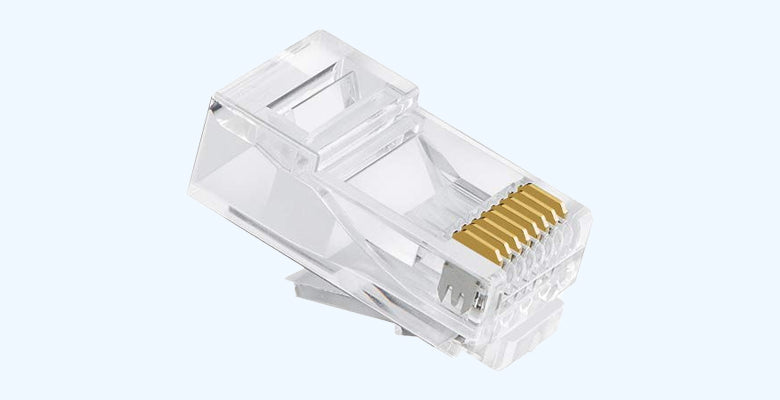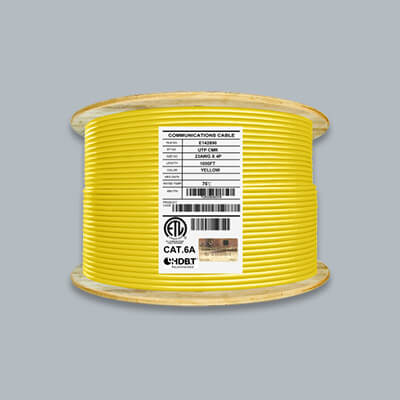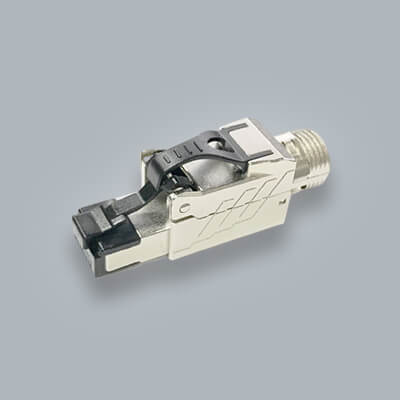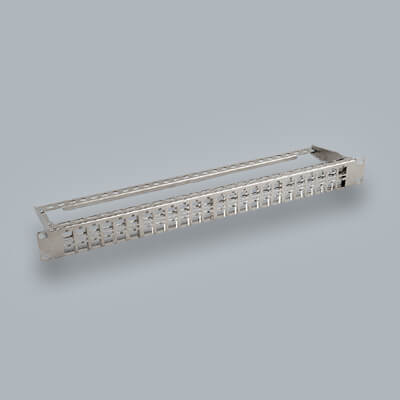What is an RJ45 Connector?

When I was younger, I remember my dad bringing home a strange looking device with a bunch of wires sticking out of it. He called it a "router" and said it would help us connect to the internet. At the time, I had no idea what he was talking about, but as I grew older and became more interested in technology, I began to understand the importance of connectivity and the various types of connectors used to connect devices.
One connector that I've come across quite frequently in my tech journey and here at Infinity Cable Products is the RJ45. But what exactly is an RJ45 and how does it differ from other connectors?
What is an RJ45?
The RJ45 connector is a commonly used device in networking and telecommunications. It is an 8-pin connector that allows for the connection of devices such as computers, routers, and switches to each other or to a network. The "RJ45" name refers to the registered jack standard and the specific type of connector, which has eight pins arranged in a specific configuration.
This connector is designed to transmit data over Ethernet cables, which are frequently used in networking. Ethernet cables are made of twisted pair wires and are categorized by their wire gauge, or AWG (American Wire Gauge). The wire gauge determines the size of the wire and, therefore, its ability to transmit data at a certain speed.
RJ45 connectors have a range of uses, including home networking, office networking, data centers, audio and video, and industrial control systems.
Types of RJ45s
Here are some types of RJ45 plugs that you might encounter
- Standard RJ45 Plug: The most popular connector for numerous networking applications.
- Shielded RJ45 Plug: Made with shielding to mitigate electromagnetic interference, ideal for demanding environments.
- Field Termination Plugs: Offering flexibility and ease of installation, particularly suited for Cat8 / Cat7A / 6A cables.
- Pass Through RJ45 Plug: Streamlining installations with effortless cable threading, simplifying intricate setups.
Shop our selection of RJ45 plugs , we also have our field termination plugs for Cat8 / Cat7A cables.
Standardization of The RJ45
The RJ45 connector is standardized by various organizations, including the Telecommunications Industry Association (TIA) and the International Electrotechnical Commission (IEC), ensuring interoperability and compatibility across different network equipment and infrastructure.
How does an RJ45 differ from other connectors?
The RJ11 connector is often mistaken for the RJ45 connector, but they are actually quite different. Both connectors are used for telecommunications, but the RJ11 connector is a 6-pin connector that is commonly used for telephone lines. It is often used to connect phones, fax machines, and other devices to a telephone line. The RJ11 connector is smaller than the RJ45 and has a different pin configuration.
In contrast, the RJ45 connector is larger and has eight pins. It is used for data transmission, while the RJ11 connector is used for voice transmission.
Another connector that is sometimes mistaken for the RJ45 is the BNC connector, which is commonly used in video applications. The BNC connector is a small, bayonet-style connector that is used to connect coaxial cables. It is typically used in applications such as CCTV and broadcast video.
Common Questions:
What are the differences between T568A and T568B wiring standards for RJ45 connectors?
The T568A and T568B wiring standards specify the arrangement of wires within an RJ45 connector. While both standards use the same eight-pin connector, they differ in the order in which the individual wires are terminated. T568A and T568B are commonly used for Ethernet networking, with T568B being the most prevalent standard in North America and T568A being more common in Europe and some other regions. It's essential to maintain consistency in wiring standards throughout a network to ensure proper connectivity and compatibility.
Can I use an RJ45 connector for both Ethernet and telephone connections?
Yes, RJ45 connectors can be used for both Ethernet and telephone connections. However, it's important to note that Ethernet and telephone connections use different wiring configurations. Ethernet typically utilizes all eight pins in an RJ45 connector, while telephone connections commonly use only two to four pins. Proper labeling and documentation of cables are essential to prevent confusion and ensure the correct use of RJ45 connectors for different applications.
What types of cables are compatible with RJ45 connectors, and what are their differences?
RJ45 connectors are compatible with various types of twisted pair cables, including Cat5e, Cat6, Cat6A, and Cat7A. The primary differences between these cable categories lie in their performance specifications, such as bandwidth, frequency, and maximum data transmission speed.
What is the maximum data transmission speed supported by an RJ45 connector?
The maximum data transmission speed supported by an RJ45 connector depends on various factors, including the quality of the connector, the category of the ethernet cable, and the networking equipment used. Generally, RJ45 connectors can support data transmission speeds ranging from 10 Mbps (megabits per second) for older Ethernet standards to 10 Gbps (gigabits per second) or higher for modern Ethernet standards such as 10GBASE-T. Using higher-quality connectors and cables can help achieve faster data transmission speeds and ensure optimal network performance.
Can I use shielded or unshielded Ethernet cables with RJ45 connectors?
Yes, both foil twisted pair (FTP) and unshielded twisted pair (UTP) Ethernet cables can be used with RJ45 connectors. Shielded cables contain additional shielding to protect against electromagnetic interference (EMI) and external noise, making them suitable for environments with high levels of interference. Unshielded cables, on the other hand, are more cost-effective and suitable for installations where EMI is minimal. The choice between shielded and unshielded cables depends on the specific requirements of the networking environment and the level of interference present.
What are some common mistakes to avoid when installing RJ45 connectors?
- Ensure that the wires are arranged according to the chosen wiring standard (T568A or T568B) and that each wire is fully inserted into its corresponding slot.
- Over-crimping or under-crimping: Apply the appropriate amount of pressure when crimping the connector to ensure a secure connection without damaging the cable or connector.
- Excessive cable length: Avoid leaving excessive lengths of exposed wire inside the connector, as this can affect signal integrity and cause connectivity issues.
- Inadequate cable management: Properly manage and secure cables to prevent strain on the connectors and minimize the risk of cable damage or disconnection.
Are there any tools or equipment I need for an RJ45?
- Crimping tool: Used to crimp RJ45 connectors onto Ethernet cables.
- Wire cutter and stripper: Used to trim and strip individual wires before inserting them into the RJ45 connector.
Conclusion
To summarize, the RJ45 connector is a commonly used device in the field of networking and telecommunications. It is an 8-pin connector that allows for the connection of devices such as computers, routers, and switches to each other or to a network. In comparison to the RJ11 connector, which is frequently used for telephone lines, and the BNC connector, which is used in video applications, the RJ45 connector is larger. Familiarizing yourself with the different types of connectors and their intended purposes can aid in selecting the appropriate connector for your specific application.





